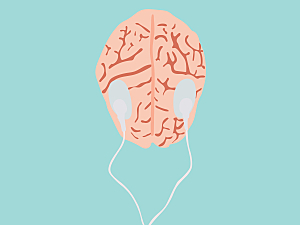Tumor treating fields (TTF), a noninvasive form of electric brain stimulation, is a novel approach to treating a myriad of cancers. For glioma, however, there are substantial barriers: the manufacturer of the Novocure Optune device suggests it should be worn for at least 18 hours/day, a major burden for patient quality of life, and the insulating effects of the skull keep up to 75% of transcranial current from reaching the brain.
Researchers at Brigham and Women’s Hospital believe an implanted intracranial stimulation system could increase both the strength and duration of TTF delivery. In Scientific Reports, David J. Segar, MD, neurosurgery fellow in the Department of Neurosurgery, Joshua D. Bernstock, MD, PhD, a clinical fellow in the Department, and colleagues provide proof of concept in a modeling study.
Methods
The investigators created MRI-derived models of three challenging cases encountered at Mass General Brigham between 2018 and 2020:
- A left temporal glioblastoma status post subtotal resection
- A thalamic glioblastoma
- An isolated high-grade glioma within the brainstem
They modeled all 5,050 possible configurations of intracranial electrode pairs and a comprehensive set of Novocure transcranial pairs. The primary measures were the electric field strength and the therapeutic enhancement ratio (TER) in the region of interest (ROI) encompassing the volume of the tumor.
The TER corresponds to the effects of an electric field: TER>0 indicates a reduction in tumor growth, TER=1 indicates complete tumor growth arrest, and TER>1 indicates tumor shrinkage.
Key Results
Transcranial TTFs were most effective for the temporal tumor and least effective for the brainstem tumor. Intracranial TTFs were the least effective for the thalamic tumor.
At 0.9 A current (the value used for conventional TTF) across all three cases:
- Transcranial TTFs achieved TER>1 in 2% of ROIs and TER>0 in 8%–53%
- Intracranial TTFs achieved TER >1 in 98%–100% of ROIs and TER>0 in 100%
Rationale for Intracranial TTF
Conceptually, the inability to reach therapeutic intensities within an entire tumor bed is akin to a subtotal resection: a larger untreated percentage of tumor confers worse clinical outcomes. Treating nearly 100% of glioma volume or peri-resection region with high-intensity fields may confer a significant survival benefit, and using an implanted array may accomplish that goal.
With intracranial TTF, patients would no longer need to shave their heads or apply large electrode pads to the scalp. The system could function similarly to a conventional deep brain stimulation system and run up to 24 hours/day, if desired. All of that should improve adherence to therapy and ultimately improve clinical outcomes.
An implanted TTF system could serve as an adjuvant modality to a range of other emerging therapies, including immunotherapy. It might also drive innovation in the emerging field of cancer neuroscience, for example, serving as a platform for physiologic recording within and/or adjacent to a tumor.
